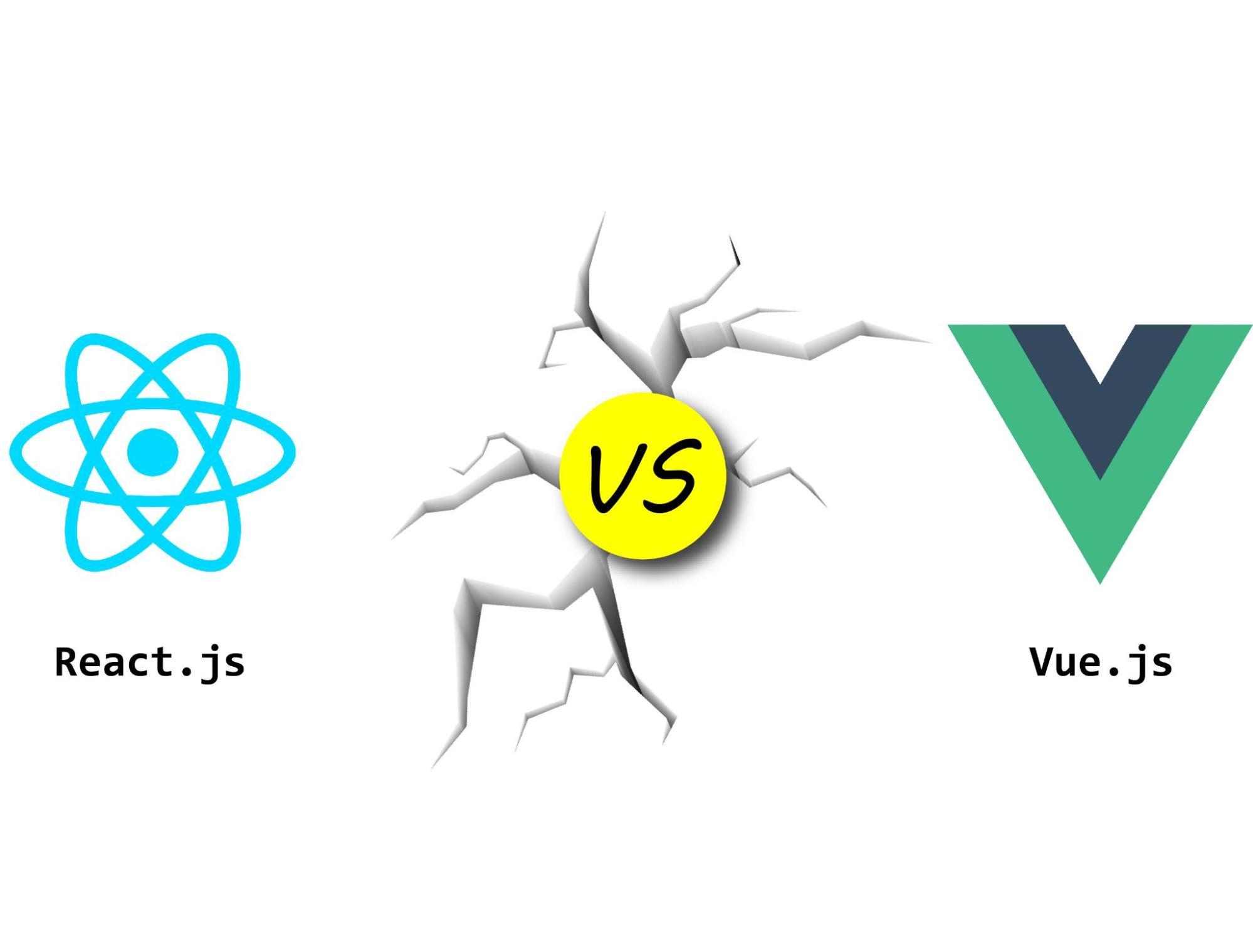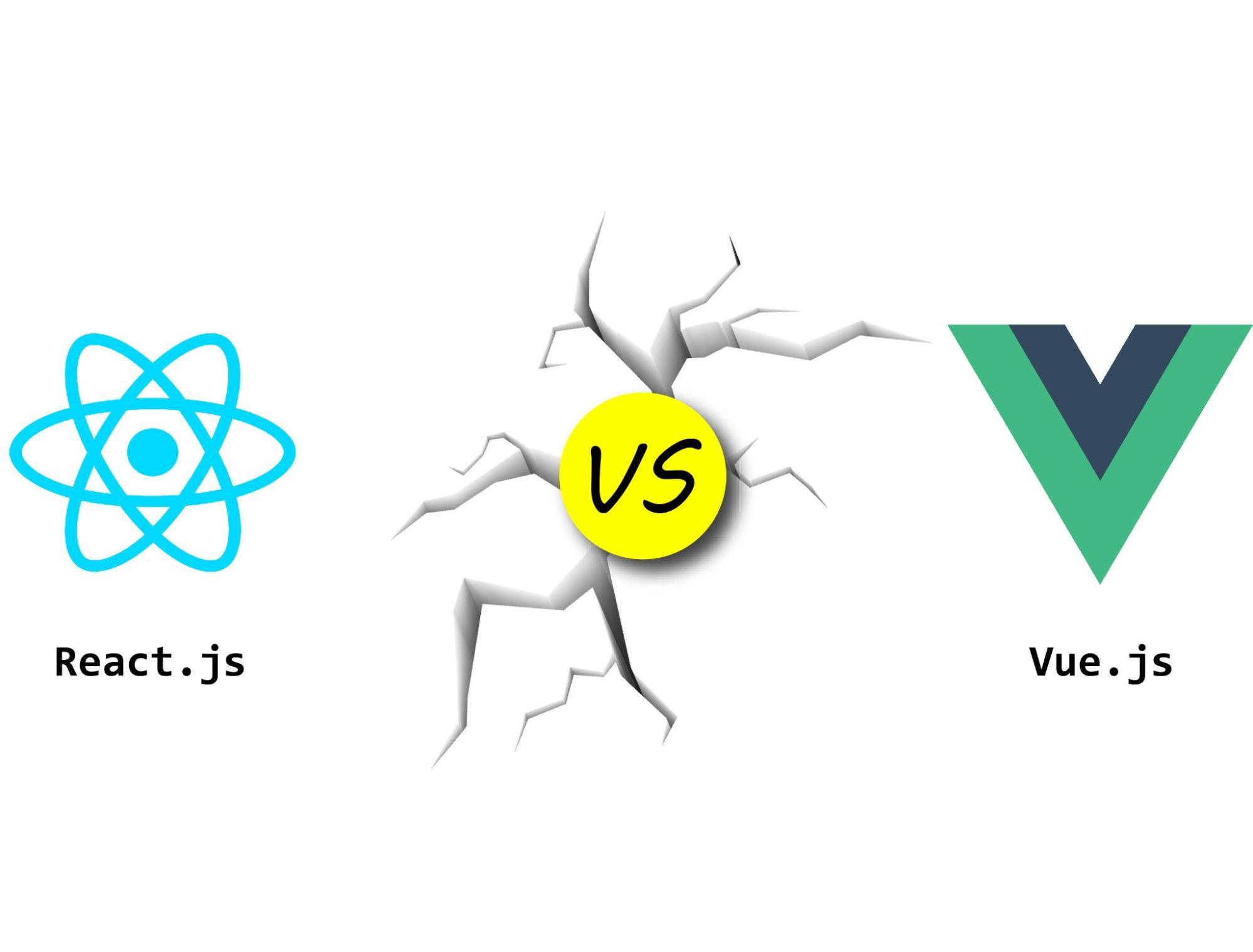Vue vs React: Which one is best?

The ongoing contest to determine the top frontend technologies has been happening for a long time, but there are two that usually make the list of many respected developers, Vue vs React. If your team is on the hunt for the best frontend technology this may be the information you’ve been waiting for.
ReactJS and VueJS are leading tools for building user interfaces for your application software. Making a choice between them can be a bit difficult. But don’t worry! We are here to assist you in navigating through this confusing situation.
In this article, we are going to compare ReactJS and VueJS based on their features and limitations. Also, we’ll guide you in comparing ReactJS and VueJS based on your project requirements. Let’s get started.

React
When creating a modern web application that boasts a responsive, stunning, and dynamic UI, ReactJS is best in this case. It’s like an all-in-one toolbox for creating interactive user interfaces that keep your users coming back again.
Let’s thoroughly examine the key features of ReactJS while also carefully evaluating its limitations to facilitate informed decision-making.
Features
Here is a list of most exciting features of ReactJS:
Component-based architecture
You can use ReactJS to break down your user interface into small, reusable components that are known as component-based architecture. This modular structure promotes code reusability and maintainability, making it easier to manage complex UIs.
JSX
React uses JSX (JavaScript XML), which is an extension that allows you to write HTML-like code directly within JavaScript. This amazing feature is the biggest advantage of ReactJS, as it enhances code readability and makes it easier to visualize the structure of the user interface.
React-Native
ReactJS shares its principles and syntax with React Native, a framework for building mobile applications for iOS and Android platforms. It’s like a magic box for you if you want to create a mobile version of your application. It’s very easy to develop cross-platform mobile apps using React Native, saving time and effort.
Virtual DOM
ReactJS allows you to update your UI more efficiently by implementing the Virtual DOM, which is an object that is the same as a real DOM object, except that it is a lightweight copy. When a change occurs in the application screen, React calculates the minimal number of updates needed and performs them on the virtual DOM before efficiently applying the changes to the real DOM. This approach results in improved performance and faster rendering.
Performance optimization
ReactJS provides several performance optimization techniques, such as memoization, lazy loading, and shouldComponentUpdate, to minimize unnecessary re-renders and improve the overall performance of your application.
Unidirectional data flow
React follows a unidirectional data flow, which means that data in a React application flows in a single direction, from parent components to child components. This simplifies the debugging process, makes the application easier to understand and reason about, and is also time-efficient for updating the application.
Limitations
Having elucidated the features of ReactJS, it is now great to delve into its associated limitations. Let’s proceed with more exploration.
Limited to the view layer
Do you know the view layer? It’s the font part of an application with which users can interact, such as buttons, links, images, etc. Now, the primary focus of ReactJS is the view layer. Although it provides tools and libraries for routing, managing state, and other functionalities, it doesn’t provide a complete solution for handling complex application logic. This may lead to difficulties in handling the complex functionality of your application that not only depends on the view layer.
Performance concerns with large applications
ReactJS is known for its efficient rendering through the virtual DOM. However, larger and more complex applications may affect React’s performance.
Mobile performance challenges
Although React Native enables cross-platform mobile app development, you may face performance challenges compared to native mobile development. Your apps may exhibit slightly slower UI responsiveness and encounter difficulties with complex animations or interactions.
Complexity in tooling
ReactJS is often used alongside other libraries and tools to establish a comprehensive development environment. For beginners, setting up a ReactJS project with the necessary build tools, bundlers, and development servers can be overwhelming.
Compatibility and backward compatibility
ReactJS evolves rapidly, and new versions may introduce breaking changes or deprecate older features or APIs. This can occasionally lead to compatibility issues.
Vue
VueJS is well-known as a powerful and user-friendly framework for building highly interactive web applications. It’s lightweight, easy to use, and users can easily modify or extend it based on project requirements.
Features
Let’s take a look at some eye-catching features of VueJS:
Component-based architecture
Like ReactJS, VueJS also encourages the development of applications in a modular and reusable manner through the use of components. This is already known as “Component-Based Architecture” to us where each component encapsulates its own logic, template, and styles.
Event Handling
VueJS provides a concise and easy-to-use syntax for handling action events like mouse clicks, scrolling effects, drag and drop, etc.
Watchers
This exciting feature allows you to watch for changes in data and trigger custom actions when those changes occur.
Devtools
VueJS offers browser extensions and devtools that greatly simplify debugging and inspecting your applications.
Flexibility
VueJS is designed to be incrementally adoptable. It is suitable for both small and large-scale applications as you can use as much or as little of it as you need in your project.
Performance
VueJS is well known for its excellent performance. It takes your application to the next level by reactivity system and optimized UI rendering mechanisms.
Limitations
While Vue.js boasts extraordinary features that render it a handy tool for developing attractive user interfaces, it does harbor some significant limitations.
Learning Curve
Though VueJS is often praised for its simplicity, it still has a learning curve especially for beginners who are new to front-end frameworks. If your team isn’t expert in VueJS, then understanding the concepts of VueJS may take some time. It can affect your project deadline.
Complex Single-Page Applications (SPAs)
VueJS is the perfect ingredient for creating Single-Page Applications or SPAs. But when it’s about an extremely complex application that has a number of advanced functionalities, you may need to integrate additional libraries like Vuex and Vue Router, which can increase the complexity of your project.
Limited Official Plugins
Some common and popular functionalities (e.g., forms validation) are not part of the core Vue.js library. Instead VueJS provides these functionalities through official plugins. Though these plugins are well-maintained, they may not cover all use cases or offer as many features as third-party alternatives.
Integration Challenges
If you’re handling a project that requires deep integration where there are multiple technologies used, you may encounter challenges in seamlessly incorporating VueJS.
Compatibility with Older Browsers
VueJS doesn’t support Internet Explorer 11. So, if your project requires support for older browsers, you should consider this compatibility issues.
Which one needs to be selected?
Are you still stuck between ReactJS and VueJS and feeling confused about selecting the best front-end technology for your project? Don’t worry! The next section will be helpful in this situation. Let’s find the best one between ReactJS and VueJS for your project.
When to select React?
Choose ReactJS if your project has the following requirements:
Single-Page Applications (SPAs)
: When it comes to developing Single-Page Applications, there is no better choice than ReactJS. It contains a rich set of libraries for managing complex UIs and user interactions in a single-page format.
Large-scale Applications
: Is your team developing a large application? ReactJS can be a perfect choice for you in this case. Its architecture is scalable and can handle the complexity of large applications.
Mobile Applications
: If you’re planning to release your application in mobile version, React is like a magical wand for you. React Native, a framework based on React, enables you to build mobile applications for both iOS and Android using the same codebase.
Existing Projects
: Do you already have a pre-built application? Do you want to upgrade its performance? React can easily be integrated into existing projects without a complete rewrite. That means you need less time and cost for upgrading.
When to select Vue?
Select VueJS for the following reasons:
User Interfaces with Real-Time Updates
: If your application deals with real-time updates (e.g., chat application, trading application), then you can choose VueJS, as it allows you to effortlessly handle data changes and keep the UI in sync.
Interactive Web Applications
: Do your applications need to create highly interactive components such as dashboards, data visualization tools, or collaborative applications? In that case, you can opt for Vue.js to achieve these goals with minimal effort.
Application size
: VueJS is much lighter than React. If your application is highly sensitive to size constraints, Vue can be a better option for you. For example, if you’re working on server-side applications that handle large amounts of data, then it’ll be better to use Vue. Because heavyweight frameworks may slow down the application.
Application loading time
: Does the loading time greatly affect your project? Then, consider using VueJS. Due to its lightweight bundle size, it becomes faster compared to other frameworks like ReactJS.
Final thoughts
Both ReactJS and VueJS are top-rated frameworks for developing modern applications that are user-friendly, efficient, and dynamic. Both of them contain robust features that aid in the development of your application.
However, despite their similarities, ReactJS and VueJS have their own differences and limitations. It is essential to consider these factors when making the final decision.
In this article, we have briefly described the features and limitations of both ReactJS and VueJS. We have also provided you with guidelines to help you select the best one for your project.
If you’re still unsure about finding the best one for your application, contact us when you’re ready to discuss further enhancements for your project. We’ll be happy to assist you.
